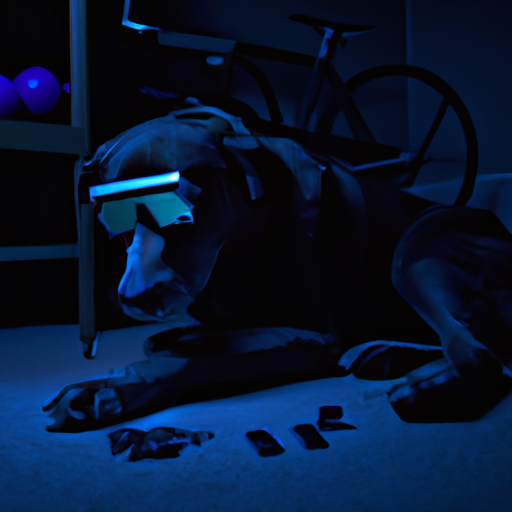Understanding Your Dog’s Vision
Let’s start by understanding the unique visual capabilities of your beloved canine companion. Dogs, unlike humans, have a different visual perception that is specially adapted for low light conditions. This is due to two significant components in their eyes: the tapetum lucidum and the higher concentration of rod cells.
-
Tapetum Lucidum: This is a layer of tissue in the dog’s eye that reflects light back through the retina. It acts like a mirror, enhancing the light available in dark conditions. This is why your dog’s eyes sometimes glow in the dark.
-
Rod Cells: While humans have more cone cells in their eyes for color perception, dogs have a higher concentration of rod cells, which are more sensitive to light and motion. This allows them to see better in the dark and detect movement quickly.
How Darkness Affects Your Dog’s Behavior
Dogs rely more on their other senses like hearing and smell in the dark, but their enhanced vision does play a significant role. You might notice that your dog becomes more active or alert at night. This is because their vision and other senses are heightened, allowing them to detect any potential threats or interesting scents more easily.
The Limitations of Canine Night Vision
While dogs are better equipped to see in the dark than humans, their night vision isn’t perfect. They can’t see in complete darkness. They need at least some light – like moonlight or distant street lamps – to navigate. In pitch black conditions, they rely more on their other senses, like smell and hearing.
Enhancing Your Dog’s Safety in the Dark
As a caregiver, your dog’s safety is your top priority. Here are some ways you can help your dog navigate safely in the dark:
- Use reflective or light-up collars and leashes.
- Make sure your yard is well-lit if your dog goes out at night.
- Avoid walking your dog in unknown areas at night.
- Train your dog to respond to voice commands, so they can still follow your instructions even if they can’t see you clearly.
Frequently Asked Questions (FAQs)
1. Can all dog breeds see equally well in the dark?
No, some breeds with larger eyes and a wider field of vision, like hounds, can see better in the dark than breeds with smaller eyes and a narrower field of vision, like bulldogs.
2. Do dogs need night lights?
While dogs can see better in the dark than humans, a night light can still be beneficial, especially for senior dogs who may have declining vision.
3. Can my dog’s night vision deteriorate with age?
Yes, just like humans, dogs can experience deterioration in their vision as they age. Regular vet check-ups can help monitor their eye health.
4. Does my dog’s fear of the dark mean they have poor night vision?
Not necessarily. Dogs might be afraid of the dark due to anxiety, past trauma, or other health issues. If you notice this behavior, it’s best to consult your vet.
Remember, your dog’s unique abilities to see in the dark are just one of the many ways they experience the world. By understanding their vision, you can better cater to their needs and ensure they live a happy, healthy life.



